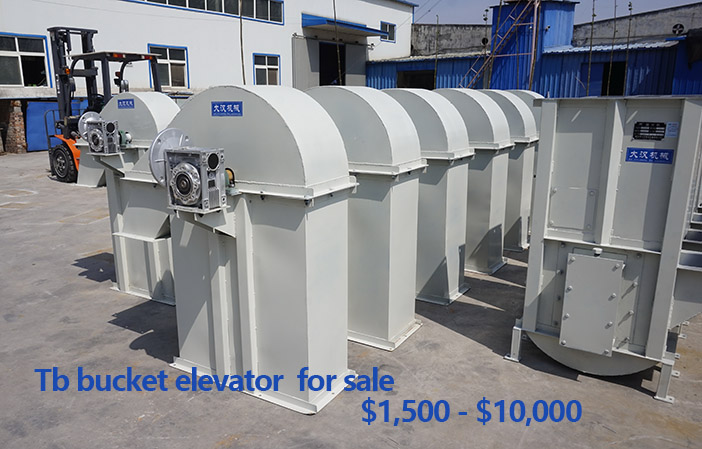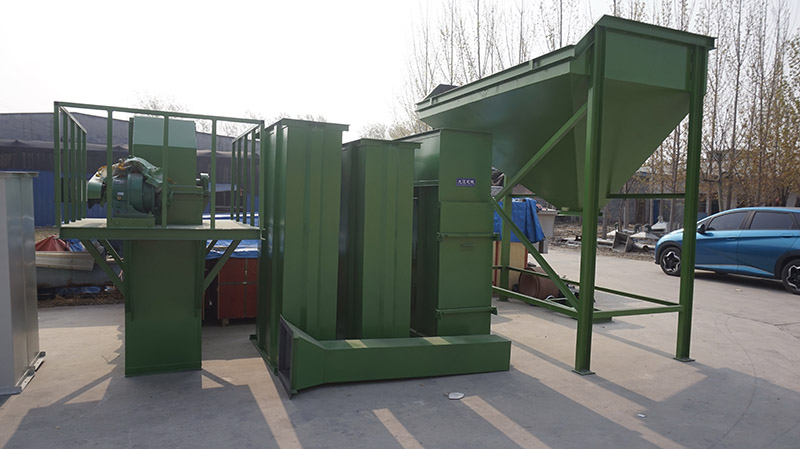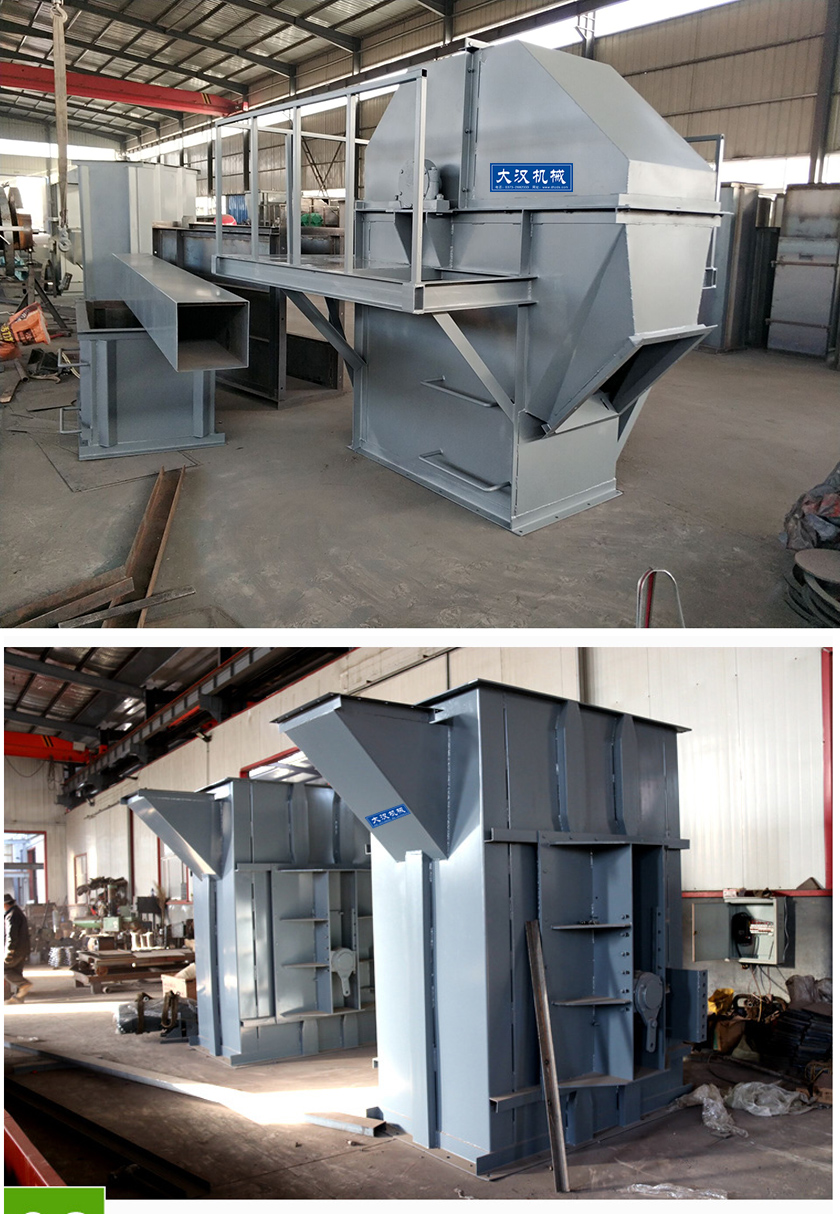TB Bucket Elevator Price
Thursday March-13 2025 17:24:00
TB bucket elevators are essential equipment for vertically transporting bulk materials in various industries. Their prices vary based on several factors, including model specifications, lifting height, capacity, material quality, hopper design, and motor specifications. Below is an analysis of how these factors influence the pricing of TB bucket elevators:

1. Model
Belt Bucket Elevator: Prices vary widely, from 1,000to1,000to180,000 per set, depending on the capacity and customization requirements12.
Stainless Steel Elevator Bucket: Prices range from 0.5to0.5to19.99 per piece for smaller components, while complete systems can cost 2,430to2,430to5,000 per tower.

2. Lifting Height
Standard Lifting Height: Most bucket elevators offer lifting heights ranging from 3 meters to 45 meters. For example, the EC series bucket elevator supports a maximum lifting height of 45 meters, with prices increasing significantly for taller models.
Price Correlation: As lifting height increases, prices rise proportionally. For instance, a 10-meter model may cost around 2,000–2,000–5,000, while a 45-meter model can exceed $10,000.
3. Lifting Volume
Standard Capacity: Bucket elevators typically handle lifting volumes ranging from 10 to 500 tons per hour. Higher-capacity models, such as those used in heavy industries, can cost 5,000–5,000–180,000 depending on the throughput.
Price Correlation: Higher lifting volumes require more robust construction and larger motors, leading to higher prices. For example, a model with a capacity of 100 tons per hour may cost 5,000–5,000–10,000, while a 500-ton model can exceed $50,0008.
4. Material
Carbon Steel: Commonly used for standard models, with prices starting at $890 per piece for Z-type elevators.
Stainless Steel: Preferred for food and chemical industries due to corrosion resistance. Prices range from 0.5to0.5to19.99 per piece for components and 2,430to2,430to5,000 for complete systems.
Galvanized Steel: Used for durability in harsh environments, with prices similar to stainless steel models.
5. Hopper Material
High-Density Polyethylene (HDPE): Commonly used in food-grade bucket elevators, such as the EC series, due to its lightweight and non-reactive properties. Prices for HDPE hoppers are included in the overall system cost, which ranges from 2,000to2,000to10,000.
Stainless Steel Hoppers: Used in heavy-duty applications, adding 10–20% to the total cost compared to standard models.

6. Motor
Standard Motors: Typically included in the base price of bucket elevators. For example, a TB elevator with a standard motor costs 890–890–2,55.
High-Efficiency Motors: Used in heavy-duty or high-capacity models, adding 500–500–2,000 to the total cost.
ATEX-Certified Motors: Required for explosive environments, such as in the food industry, increasing the price by 15–30%.
Summary of Key Findings
Price Range: Tb bucket elevators are available in a wide price range, from 890to890to180,000, depending on the model, specifications, and customization.
Lifting Height: Taller models (up to 45 meters) are significantly more expensive, with prices exceeding $10,000.
Lifting Volume: Higher-capacity models (up to 500 tons/hour) can cost 50,000–50,000–180,000.
Material: Stainless steel and HDPE components add 10–30% to the base price.
Motor: High-efficiency or ATEX-certified motors increase costs by 500–500–2,000.
Recommendation
For light-duty applications (e.g., small-scale agriculture), consider TB bucket elevators priced at 890–890–2,5507.
For food-grade applications, opt for stainless steel or HDPE models, with prices starting at $2,4303.
For heavy-duty industrial use, invest in high-capacity belt bucket elevators, with prices ranging from 5,000to5,000to180,000.

TB bucket elevator pricing is a composite of the model selected (and its associated capacity), the required lifting height and throughput, the materials chosen for both the frame and buckets, and the specifications of the drive motor and related components. Buyers looking to optimize cost should consider their specific application needs—balancing higher upfront costs for increased capacity or corrosion resistance against lower-cost, standard designs.
